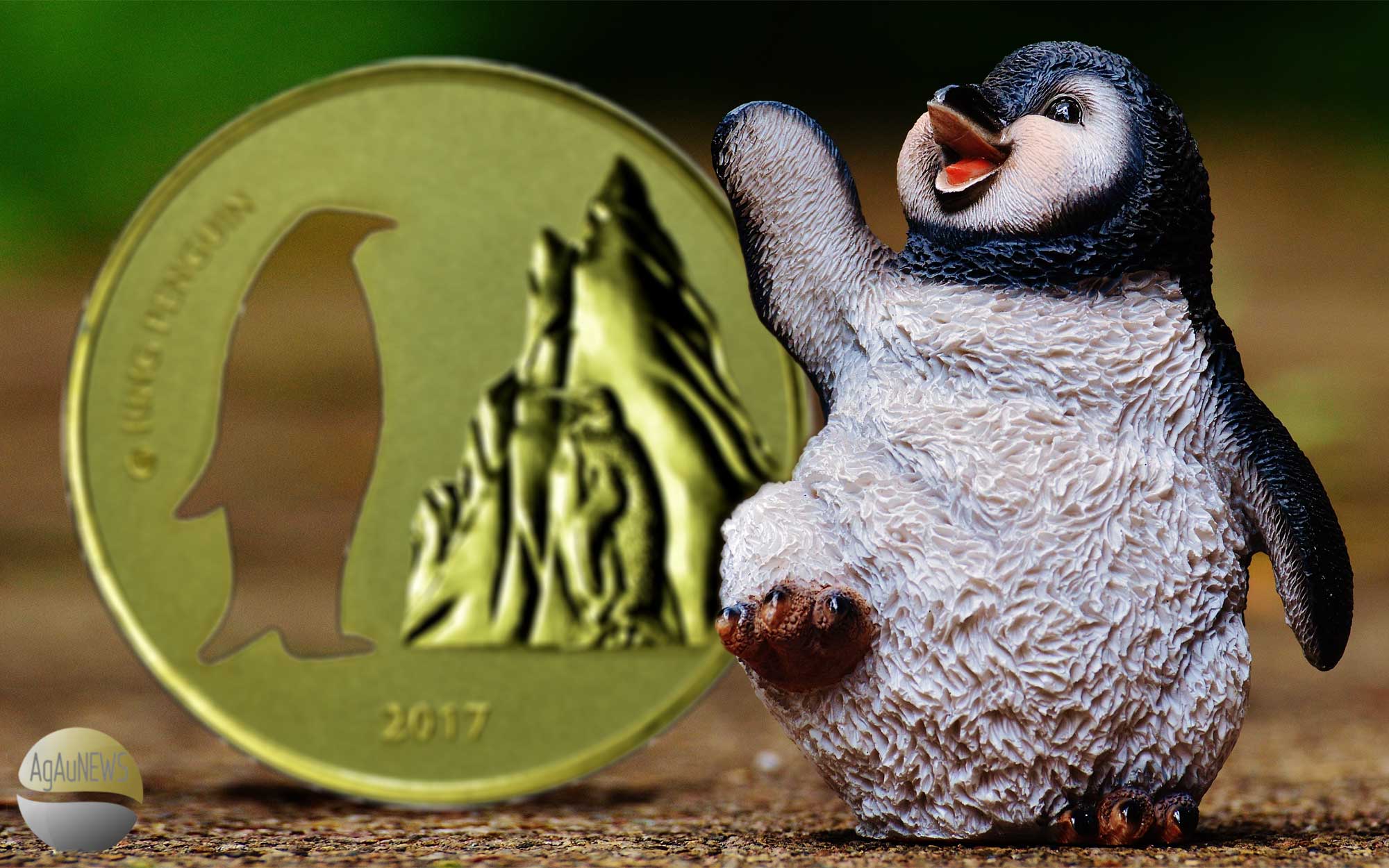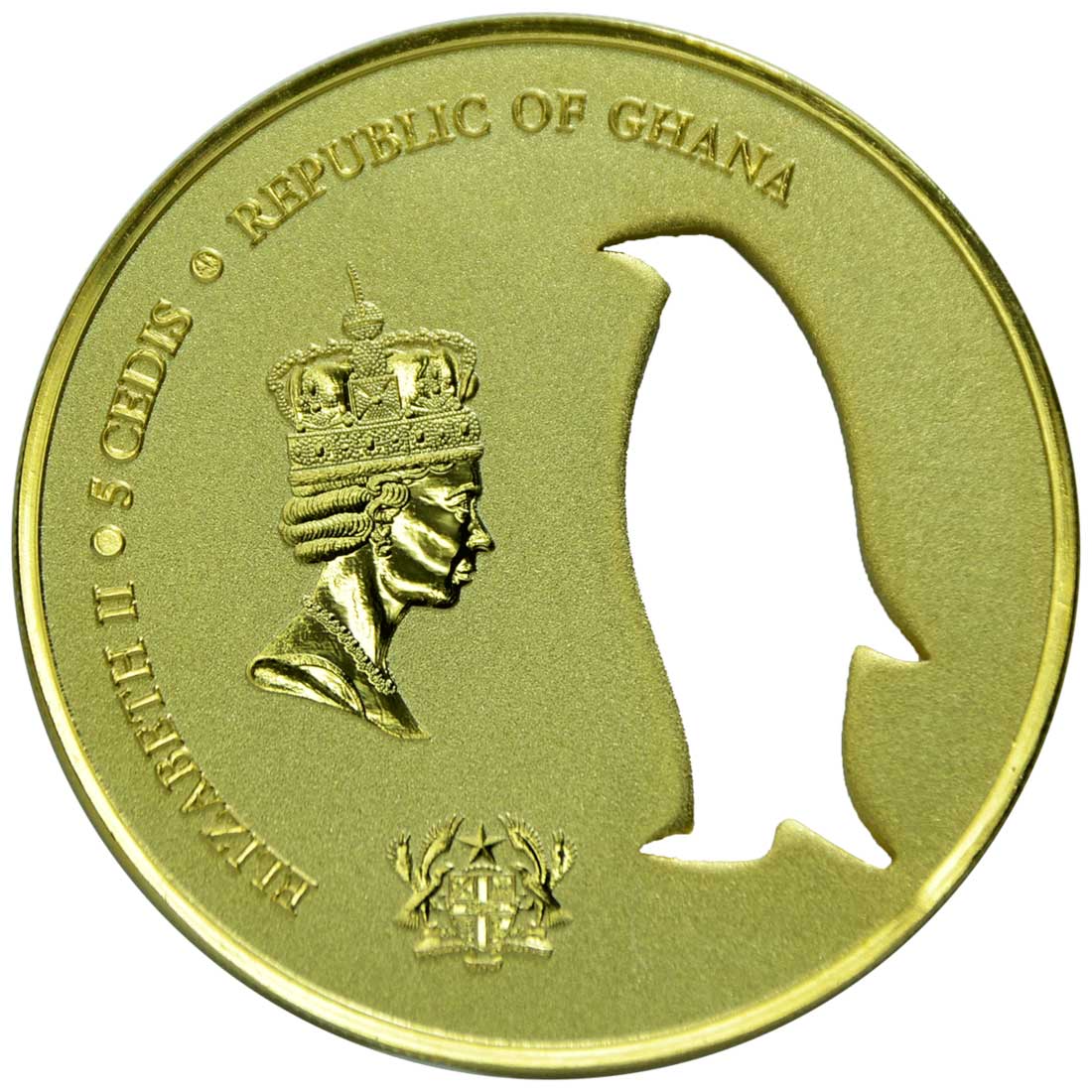MCI releases its first cutout coin with a gilded King Penguin design for Ghana
In 2013, Coin Invest Trust issued a stunning Mongolian coin called the Crying Wolf. The first of a five-coin series called Mongolian Nature that finished this year, it was a half-ounce gilded silver coin that had been precisely cutout to form a silhouette of the animal. Quite a bit more complex to achieve that it would seem at first glance, the paucity of other coins using this technique is proof enough of the difficulties.
The New Zealand Post and the Royal Canadian Mint have both issued coins since, and MDM gave details of a series earlier this year that doesn’t seem to have been issued, but none of them matched the award-winning CIT series in our view. Now it’s the turn of German coinproducer MCI-Mint to add its effort to the mix. Like Mongolian Nature, MCI’s coin is gilded, but the rest is different.
Struck in an ounce of silver to an expansive 50.0 mm diameter, this new King Penguin themed coin has the signature cut-out silhouette of the creature, but whereas the CIT series eschews further embellishment, MCI’s coin also contains an image of a penguin in front of a rock background. The coin has a rim and carries title and date inscriptions. The obverse holds the other required inscriptions, along with the effigy of the head of the Commonwealth of which Ghana is part – Queen Elizabeth II. The Ghanaian national emblem sits just below the effigy.
Packaged in a coin box inside a coloured shipper, the coin has a mintage of 750 pieces and is supplied with a certificate of authenticity. It’s available now and sells for $99.00. Quite an interesting piece with a very cool subject, and one helping fill the gap left by the ending of CIT’s outstanding series.
KING PENGUIN
The King penguin (Aptenodytes patagonicus) is a large species of penguin, second only to the emperor penguin in size. The King penguin stands at 70 to 100 cm tall and weighs from 9.3 to 18 kg. Thus the average weight of the king penguin is similar or just slightly higher than that of the largest living flying birds.
King penguins eat small fish and squid and rely less than most Southern Ocean predators on krill and other crustaceans. Fish constitute 80–100% of their diet, except in winter months of July and August, when they make up only 30%. Lanternfish are the main fish taken, and cephalopods, like the hooked squid and the sevenstar flying squid, are an important food source. On foraging trips king penguins repeatedly dive to over 100 metres, and have been recorded at depths greater than 300 metres.
The majority (around 88% in one study) of dives undertaken by king penguins are flat-bottomed; that is, the penguin dives to a certain depth and remains there for a period of time hunting (roughly 50% of total dive time) before returning to the surface. Its average swimming speed is 6.5–10 km/h. King penguins also porpoise, a swimming technique used to breathe while maintaining speed. On land, the king penguin alternates between walking with a wobbling gait and tobogganing—sliding over the ice on its belly, propelled by its feet and wing-like flippers. Like all penguins, it is flightless.
King penguins breed on the subantarctic islands at the northern reaches of Antarctica, South Georgia, and other temperate islands of the region. The total population is estimated to be 2.23 million pairs and is increasing. The largest breeding populations are on the Crozet Islands, with around 455,000 pairs, 228,000 pairs on the Prince Edward Islands, 240,000–280,000 on the Kerguelen Islands and over 100,000 in the South Georgia archipelago. Macquarie Island has around 70,000 pairs.
SPECIFICATION
| NAME | 2017 KING PENGUIN |
| DENOMINATION | 5 Cedis |
| COMPOSITION | 0.999 silver |
| WEIGHT | 31.1 grams |
| DIAMETER | 50.00 mm |
| FINISH | Gilded |
| MODIFICATIONS | Cutout |
| MINTAGE | 750 |
| BOX / COA | Yes / Yes |





Leave A Comment